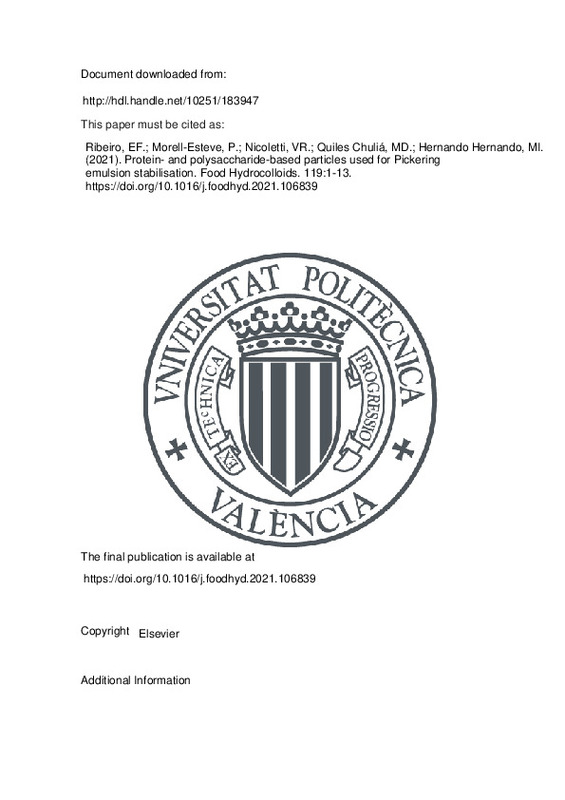JavaScript is disabled for your browser. Some features of this site may not work without it.
Buscar en RiuNet
Listar
Mi cuenta
Estadísticas
Ayuda RiuNet
Admin. UPV
Protein- and polysaccharide-based particles used for Pickering emulsion stabilisation
Mostrar el registro completo del ítem
Ribeiro, EF.; Morell-Esteve, P.; Nicoletti, VR.; Quiles Chuliá, MD.; Hernando Hernando, MI. (2021). Protein- and polysaccharide-based particles used for Pickering emulsion stabilisation. Food Hydrocolloids. 119:1-13. https://doi.org/10.1016/j.foodhyd.2021.106839
Por favor, use este identificador para citar o enlazar este ítem: http://hdl.handle.net/10251/183947
Ficheros en el ítem
Metadatos del ítem
| Título: | Protein- and polysaccharide-based particles used for Pickering emulsion stabilisation | |
| Autor: | Ribeiro, E. F. Nicoletti, V. R. | |
| Entidad UPV: |
|
|
| Fecha difusión: |
|
|
| Resumen: |
[EN] A few protein- and polysaccharide-based particles can function as effective stabilisers in multi-phase food systems. Combining both polymer-based particles and tailoring the wettability of colloidal systems result in ...[+]
|
|
| Palabras clave: |
|
|
| Derechos de uso: | Reconocimiento - No comercial - Sin obra derivada (by-nc-nd) | |
| Fuente: |
|
|
| DOI: |
|
|
| Editorial: |
|
|
| Versión del editor: | https://doi.org/10.1016/j.foodhyd.2021.106839 | |
| Código del Proyecto: |
|
|
| Agradecimientos: |
The authors would like to thank the project RTI-2018-099738-B-C22 from the 'Ministerio de Ciencia, Innovacion y Universidades', the Coordenacao de Aperfeicoamento de Pessoal de Nivel Superior - Brazil (CAPES) Finance Code ...[+]
|
|
| Tipo: |
|







![[Cerrado]](/themes/UPV/images/candado.png)


